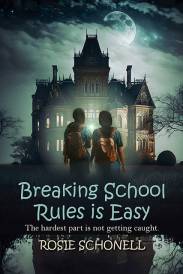Emma Stone The Favourite
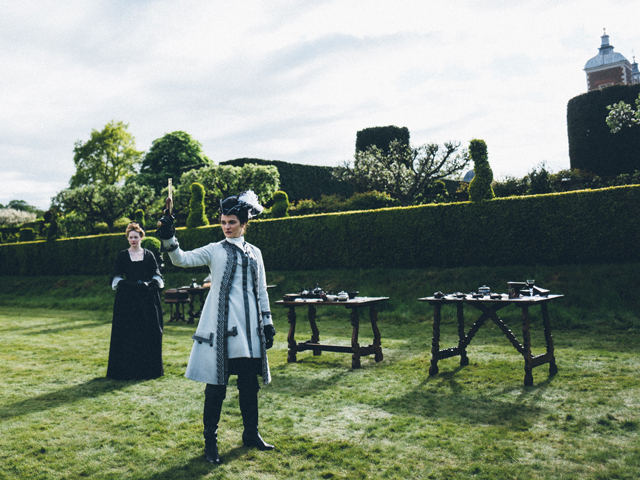
Early 18th century. England is at war with the French.
Cast: Emma Stone, Nicholas Hoult, Rachel Weisz, Olivia Colman, Mark Gatiss, Joe Alwyn
Director: Yorgos Lanthimos
Genre: Biography, Drama
Rated: MA15+
Running Time: 119 minutes
Synopsis: Early 18th century. England is at war with the French. Nevertheless, duck racing and pineapple eating are thriving. A frail Queen Anne (Olivia Colman) occupies the throne and her close friend Lady Sarah Churchill (Rachel Weisz) governs the country in her stead while tending to Anne's ill health and mercurial temper. When a new servant Abigail Masham (Emma Stone) arrives, her charm endears her to Sarah. Sarah takes Abigail under her wing and Abigail sees a chance at a return to her aristocratic roots. As the politics of war become quite time consuming for Sarah, Abigail steps into the breach to fill in as the Queen's companion. Their burgeoning friendship gives her a chance to fulfill her ambitions and she will not let woman, man, politics or rabbit stand in her way.
The Favourite
Release Date: December 26th, 2018
About The Production
"When you make a film set in another time it is always interesting to see how it relates to our time- -you realise how few things have changed apart from the costumes and the fact that we have electricity or internet. There are so many ongoing similarities in human behaviour, societies and power."
-Yorgos Lanthimos
The setting for The Favourite has been plucked from real history, from the veiled world of Queen Anne (Olivia Colman) – the last (and historically most ignored) of the Stuart line of Britain's rulers" who though infamously gouty, shy and disregarded, nevertheless reigned as Great Britain became a global power. It is through Anne's intricate relations with two other women of cunning and aspiration"her lifelong intimate friend and political advisor Lady Sarah (Rachel Weisz), and Sarah's penniless cousin turned social-climbing chambermaid Abigail (Emma Stone) – that the film dives into a whirlpool of manipulations and emotions that define the phrase "palace intrigue."
Yorgos Lanthimos' The Favourite is the director's first period film – set against the outrageously aristocratic tableau of 18th Century royals. A dark yet comic story about three hugely commanding women jockeying with raw abandon for love, favor and power that actually feels very contemporary.
The film creates its own very alive universe, with Lanthimos playing freely with the external events of the day to service and motivate the inner lives and personal politics of his characters. And speculations aside, no one truly knows what went on verbally, physically or otherwise behind the doors of Queen Anne's court, let alone in her bed.
Though the film plays like a bedroom farce with global consequences, screenwriter Tony McNamara, who worked closely with Lanthimos from an original screenplay by Deborah Davis, concurs that it is ultimately a love story. "The story is about how complicated love is, and how who you are as a person can be perverted and deformed by those complications," he says. "We called it a comic tragedy and that's what it is. It's about these people who love each other, but there are so many other aspects of their personality and aspects of what they want in the world-at-large that get in the way of staying in love."
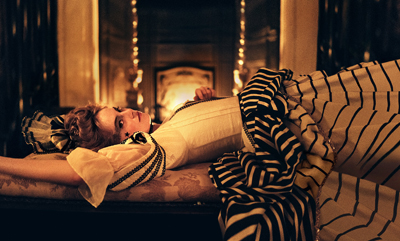 Roots Of Intrigue: Queen Anne's Unusual Reign
Roots Of Intrigue: Queen Anne's Unusual Reign "How goes the Kingdom?"
- Lady Sarah
Though Lanthimos veers into psychodynamics and inter-relational fireworks, the foundation of The Favourite began with the already mystery-laden reign of the real Queen Anne. "What interested me most were these three characters, their power, their fragile relationships and how the behaviour of so few people could alter the course of a war and fate of a country. It is also for me a love story that can be quite funny and dramatic and gets dark," says Lanthimos.
Queen Anne may be England's least known ruler, not least of all because she left no heirs to speak of her, despite an extraordinary 17 pregnancies. (In fact, had Anne left an heir, there may have been no United States as such, since George III may never have been King.) Ascending to the throne at the turn of the 18th Century, essentially because no other Protestant successors to the Stuart royal line were available, she assumed the role of Queen just as England was on the verge of a tidal wave of changes. Anne would oversee a war with France, considered the first world war of modern times, and the uniting of England with Scotland to forge the Kingdom of Great Britain. She would also confront a shocking new era of acrimonious national division, with Whigs and Tories taking sides as partisans and bitterly battling each other for influence as a young two-party political system was born.
For the world of rapidly enlarging personal and political agendas in which she moved, Anne was not an obvious match as Queen and ruler. Plagued by incessant ill health, notoriously meek, anything but glamorous with her myriad skin and joint ailments, and having only a limited education, she was perceived as highly susceptible to manipulation.
This in turn meant Anne was beset upon by a flurry of people competing to gain influence by finding a way to gain her trust"or perhaps, her heart.
The singularity of Lanthimos' vision sparked the producers to wonder how he might approach the manifold themes of Queen Anne's power struggles. "Yorgos' style can be elegant, simple and complicated all at the same time," observes producer Ceci Dempsey. "He is an enigmatic individual who has this amazing ability to communicate through his films. There is a kind of subliminal magic that goes on with his storytelling, a kind of alchemy where you watch one of his films and a few days later you're still coming up with more questions. He can be incredibly provocative in all the best ways."
The two women who made their way deep into Anne's inner sanctum created a triumvirate of female power-players uncommon for any time period, let alone in the so-called days of pre-Enlightenment.
The first was Lady Sarah Churchill, the legendarily sharp and alluring Duchess of Marlborough, Anne's BFF since childhood who, once Anne took the throne, became a primary political adviser and perhaps (according to rumors that have swirled for centuries) her lover. The second was Abigail Masham, who was Anne's cousin by birth but reduced to destitution by family bankruptcy, joining the royal household as a lowly maid. Nevertheless, Abigail would set in motion an epic, impassioned battle with Sarah to become Anne's new "favourite," making herself indispensable to the Queen, while pushing Anne in the opposite political direction that Lady Sarah was pulling.
That was the historical account. But the bones of the story come to life with a psychological and sensual resonance that escaped the history books. It started with a screenplay by Deborah Davis, which producer Ceci Dempsey and her company Scarlet Films started developing two decades ago. "The first draft of the script landed on my desk seemingly out of the blue," Dempsey recalls. "It was a fantastic story of betrayal with a rare opportunity to see brilliant women behaving badly, and the fact that it's based on a true story made it even more appealing. Since then, the script has gone through countless mutations but the core story, that of three women each struggling to survive by betraying the others, has endured."
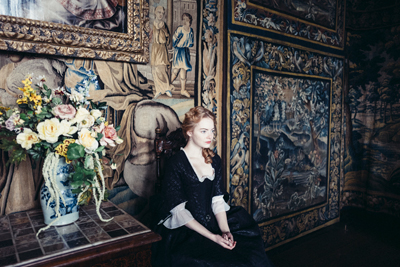 Davis had a wide canvas to work with from a historical standpoint, but felt compelled to focus on specific relationships in the brief but tumultuous reign of Queen Anne. "My focus was on the female triangle in Queen Anne's bedchamber and this shift in Anne's affections from Sarah to Abigail," notes Davis. To research this triangle, Davis combed through volumes of letters between Sarah and Anne and Abigail and Harley. While a vivid picture of Sarah has been painted by her own memoir, "the original evidence for Abigail is sparse and comes mainly from Sarah," says Davis, adding "there were interesting snippets to be found elsewhere where Abigail emerges as a ruthless chambermaid, and her trajectory clearly reveals her ambition."
Davis had a wide canvas to work with from a historical standpoint, but felt compelled to focus on specific relationships in the brief but tumultuous reign of Queen Anne. "My focus was on the female triangle in Queen Anne's bedchamber and this shift in Anne's affections from Sarah to Abigail," notes Davis. To research this triangle, Davis combed through volumes of letters between Sarah and Anne and Abigail and Harley. While a vivid picture of Sarah has been painted by her own memoir, "the original evidence for Abigail is sparse and comes mainly from Sarah," says Davis, adding "there were interesting snippets to be found elsewhere where Abigail emerges as a ruthless chambermaid, and her trajectory clearly reveals her ambition." The experience of researching this era in English Royalty led Davis to a better understanding of the period not always written about in history books. "My focus was always on the three women," says Davis. "I wanted the audience to discover a period in 18th century English history where women held power and influenced events on the British political and European stage."
It was in 2009, producer Ed Guiney of Element Pictures came aboard and together with Dempsey became acquainted with Yorgos Lanthimos, a director hailing from Greece who was making waves with his Oscar-nominated film Dogtooth, a darkly absurd and devastating story of an isolated family that confines its children with unsettling consequences. Film4 boarded the film in 2013, developing the project alongside the filmmakers and co-financing alongside Fox Searchlight and Waypoint Entertainment. Recalls Guiney, "We both felt that Dogtooth was an extraordinary exploration of the nature of a family. It showed Yorgos' ability to explore different facets of our lives--be it family, be it love, be it companionship, or whatever it might be"by telling heightened stories that exist in parallel worlds that nevertheless evoke the very essence of how we interact with each other."
Unstitching The Costume Drama
"People are all sorts of things at any given time and they also do the unexpected. Yorgos' vision of the world is that there's a broader way of looking at people and that the deeper you look, the more complicated, perverse and strange people become. Audiences really respond to that because that is true of what people are like."
-Tony McNamara, Writer
Says producer Ed Guiney: "We knew that if Yorgos were to take on the British costume drama, he would re-shape it to create something utterly unique. That was exciting. Yorgos is someone who not only has a vision, but can marshal that vision to say something bold, distinctive and inspiring. When you find people with that kind of vision, you roll with them wherever they might take you."
When they shared the early draft of The Favourite with Lanthimos in 2010, he saw "something kind of extraordinary and very unusual in it," says the director. "I was intrigued by the idea of making a film that had three women as main protagonists. It seemed very rare back then."
But first would come the production of Lanthimos' premier English-language film, The Lobster, which Dempsey and Guiney produced. Starring Colin Farrell and Rachel Weisz the film went on to win the Jury Prize at the 2015 Cannes Film Festival and was nominated for Best Original Screenplay at the 89th Academy Awards. A year later, Guiney produced Lanthimos' second English-language feature, THE Killing Of A Sacred Deer, which was awarded Best Screenplay at the 2017 Cannes Film Festival. Both these films were also developed and co-financed by Film4.
All the while Lanthimos continued to ponder The Favourite, while the team searched for a writer whose voice could mesh with his. They found a catalytic match in Australian playwright and screenwriter Tony McNamara, who seemed to share a tantalizing way of probing the weirdness and wildness of everyday human behavior.
As Guiney explains, "Tony's writing is incredibly distinctive. He has great tonal dexterity, where he can leap from high drama to tragedy to comedy all in one scene. I think it's reminiscent of Yorgos as a filmmaker in that he can compress many different kinds of emotional contradictions into a single beat. It felt like a great marriage when they came together. It unlocked the potential of the film for Yorgos, knowing he had a writer who could go the whole distance with him."
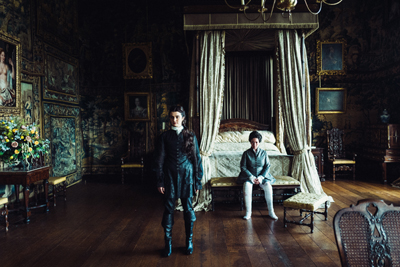 Adds Dempsey, "Tony shares Yorgos' irreverence, wit, unpredictability, love of the absurd and dark, dark humour. They also share the same kind of artistic discipline, which was so important."
Adds Dempsey, "Tony shares Yorgos' irreverence, wit, unpredictability, love of the absurd and dark, dark humour. They also share the same kind of artistic discipline, which was so important." McNamara says he was drawn to the film precisely because Lanthimos was clear that he did not want to make anything remotely resembling standard period drama fare. In fact, he wanted to break the genre.
"I loved being given the chance to wonder: what liberties could really be taken? It was a great opportunity to do something unlike anything I'd done before."
Favoring complexity and feel over slavishness to historical fact, Lanthimos and McNamara discussed guidelines that informed the rewrite from the start. "We talked about having the characters feel contemporary, to be so complicated that you can't just read their intentions quickly"or you think you can but you soon realise you can't," says McNamara. "We were seeking a certain freshness, a certain irreverence and a certain fun in the dialogue and the action of the scenes."
In thinking about the script's architecture, the pair honed in on the women's converging relationships. "We chose early on not to make the movie one person's story," McNamara elaborates. "The idea was to follow this triangle, to see how these three lives intersecting affect history. It was important that no one woman owns the POV of the story."
Certainly one convention of costume drama McNamara and Lanthimos torpedoed was staid manners. "That was one of the things in period films I didn't like – how polite they were," McNamara says. "And even though we knew this was society of manners at that time, underneath that we wanted to show a sort of casual cruelty. Society was rigid and you were stuck where you were, so all you had was your ability to influence other people and to shift yourself and your motive; to shift your ground. That was why people operated with such hardcore cruelty at times."
As he wrote, McNamara referred to written accounts of the period for context and concepts but he never allowed the story to be cemented down by history. "As an Australian and a Greek, Yorgos and I weren't attached to English history, so maybe we felt more free to be fast and loose with it," McNamara muses. "There's a fundamental truth to the big events and the big frame of the story, but we were mostly concerned with exploring these three women. So where the established history was useful to us it stayed, and where it wasn't useful to us we let it go. It was quite fun to do."
Throughout the process, McNamara and Lanthimos spent an unusual amount of time together, travelling to Italy to take long walks and sit for ponderous meals while sharpening the dialogue to a point. "All of that helped me to fuse the writing with Yorgos' vision as a director," says McNamara. After four years of collocation, the finished screenplay was everything the producers imagined when they first considered Lanthimos. The ambiguity of the characters was intense, but what also struck Dempsey and Guiney was just how unusually proactive and authoritative the three women in the story felt, and not only because they were essentially ruling Great Britain.
"You see women behave in this film in ways that they often behave in real life, but that you don't often see in the movies," observes Guiney. "They are absolutely in control, but at other times are capricious, jealous, angry, and like most of us, absolutely flawed. You see that in all its glory, all its ambiguity, all its frailty, all its power. And then when you put these same women into the pressure cooker of a country at war and at the epicentre of decision making, it results in something pretty original."
"There is also a level of physicality that you don't see in a period film, unless it is two men duelling," adds Dempsey. "In The Favourite, the women are pigeon shooting, galloping on horses, charging down corridors, physically seducing men in the wood and having sex together."
With characters who demand such bared performances, casting was of course an essential piece.
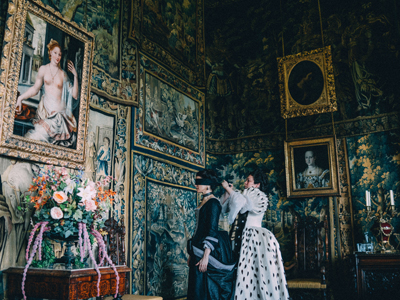 Olivia Colman: Queen Anne
Olivia Colman: Queen Anne "Yorgos is completely committed to ideas that are unaffected by expectations or by the normal concepts we all typically adhere to. I think to actors, that kind of originality is intoxicating. He evokes very interesting performances by decoding and challenging normal conventions"and great actors love the challenge of that."
-Dixie Chassay, Casting Director
Encumbered by grief, gout and insecurity though she may have been, Queen Anne was nevertheless handed enormous authority and power, and in the screenplay for The Favourite she moves like a pendulum between extremes of would-be panache and pathos. To embody all her wild contrasts and emotions, Lanthimos had from the start just one actor in mind: Olivia Colman.
Working previously with him with on The Lobster, Golden Globe® Award winning actress Olivia Colman ("The Night Manager") is no stranger to royalty. She played the Queen Mother in Hyde Park On The Hudson and plays Queen Elizabeth II in the new season of "The Crown." But taking on The Favourite's version of Anne was something deeper and darker.
"I always choose actors because of their presence, their natural inclinations and what the camera sees in them, even if we don't know exactly what that is. I just knew early on that Olivia had to be our Queen," says Lanthimos.
The producers were equally taken with the choice. "Yorgos has great instincts when it comes to casting," observes Dempsey. "Olivia portrays this spoiled, mercurial and manipulative monarch as someone authentically vulnerable, emotionally desperate and weirdly charismatic."
McNamara notes that Anne is a captivating role in part because "She is not what she seems. Though she appears to be an invalid and even simple in the beginning, you start to realise that she is actually aware of her power. It's just that she chooses erratically when to use it, which makes for a very intriguing character."
Colman's portrait of Anne is very much rooted in the Queen's body, in its vulgar awkwardness and its laments, but also its responsiveness and sensuality. Colman says she found her way into the character's many nooks and crannies through Anne's underlying grit, rather than her weaknesses. Just as much as Sarah and Abigail, Anne is a survivor. "She must have had extraordinary strength," Colman observes. "I think she wanted to be seen as a good Queen, but she just didn't have the confidence to do it. I never saw her as pathetic. I'm quite proud of her."
She also tapped into the profound loneliness of a woman who can never be sure who to trust and who has been through the unfathomable loss of 17 children (several were miscarried, others stillborn and her longest-lived son lived to age 11). If anything, her isolation, heightened by the vast, echoing rooms of the Royal Palace, only seems to increase her many appetites, needs and bunnies.
"There's so much sadness in her background, she must have been terribly lonely, because in her position, you never really know if people genuinely like you or if it's only because you're the Queen," Colman elaborates. "At the same time, she is quite childlike, so that part was fun to play. In her heart, she doesn't really feel like a Queen, which comes out in her rages and in her way of putting her foot down. I enjoyed myself, being cantankerous and slapping page boys."
Colman relished the chance to reunite with Lanthimos. "Yorgos is genuinely brilliant and you completely trust him," she says. "Yet, his mind is so extraordinary that you can't really relax, because you never really know where he is going to go next. He shoots things from angles that nobody else shoots and it all looks beautiful. I love learning and it's always a massive learning curve working with Yorgos."
Part of the learning curve on The Favourite was diving into Anne's sexual desires, and the switching of her affections from Lady Sarah, who had been essentially running the country in Anne's stead, to her new favourite, Abigail, who appeals to her in an entirely different way.
"I don't think Anne realizes that Sarah is the true love in her life when she has her head turned by Abigail," Colman observes. "She and Sarah have known each other since they were little girls and they've always protected each other. But with Abigail, Sarah is just so thrilled that someone is so attentive towards her. She just thinks, 'oh, this beautiful young creature is looking at me' and she's completely struck by that. But the tragic part is that the Queen thinks it's all for real … and it's not."
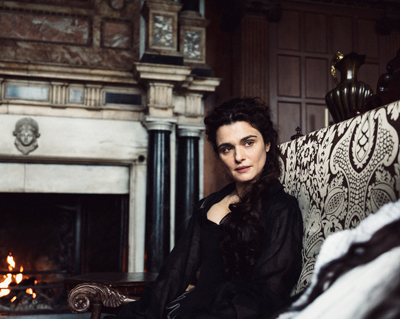 Rachel Weisz: Lady Sarah
Rachel Weisz: Lady Sarah"Lady Sarah has the whole package: she's very intellectually powerful, she's very sexually powerful, she's physically quite powerful and politically she is in charge of … well she would say, she's in charge of the entire country. I think of her as having the clarity and decisiveness of any modern political leader."
-Rachel Weisz
Pulling strings behind the reign of Queen Anne, and propping her up in more ways than one, is her right-hand woman, Lady Sarah Churchill, the first Duchess of Marlborough"who also attained unprecedented power, though more through savvy than inheritance. Historically, Sarah Jennings Churchill is known for beginning the Spencer-Churchill line that came to include both Winston Churchill and Princess Diana [née Spencer]. But she is also regarded as one of the most powerful political figures of her times, the woman who kept the Queen's purse, bent the Queen's ear and blackmailed her when she felt it necessary.
Playing Sarah in The Favourite is Academy Award© winner Rachel Weisz in her second feature with Lanthimos, following The Lobster.
Lady Sarah Churchill met the Queen when both were young daughters of powerful men, secluded in the boring confines of the Royal Palace. Their friendship would develop into something both symbiotic and highly intimate"the real Anne indeed wrote Sarah passionate letters with lines such as "I hope I shall get a moment or two to be with my dear…that I may have one embrace, which I long for more than I can express."
Though Sarah married John Churchill, who was soon named the Duke of Marlborough by Queen Anne, the closeness between the two women continued long after.
When Anne ascended to the throne, she named Sarah to several key positions including Mistress of the Robes (the highest title that could be held by a woman in that time) and Keeper of the Privy Purse. Sarah took those opportunities for all they were worth. She became Anne's most indispensable adviser, holding forth on matters of policy, politics and intricate war strategy. Renowned for her fierce intelligence, her savage temper, her gutsy frankness and also her oft-mentioned beauty, Lady Sarah also drew a circle of sycophants and influence-seekers around her. Her friendship could bestow huge political advantages. But she was an enemy no one wanted to make.
"There was already a great amount of trust between Rachel and Yorgos from The Lobster," Dempsey notes. "And it was more inspired casting. Rachel brings both authority and sexiness to Sarah. She allows her to be imperious and borderline unsympathetic"and yet, when Sarah is humiliated and suffers a dramatic reversal of fortune, you see her retain her dignity in defeat. We have sympathy for her but we don't pity her, which is a very challenging character arc."
Weisz saw the film as Lanthimos upending, and complicating, how history could look and feel, allowing it to have its own unsettling shocks and surprises. "The Lobster of course was a wholly imagined universe. The Favourite certainly has an historical basis, but it is history as told by Yorgos, and it felt quite different from anything I've ever experienced before," describes Weisz. "The universe he creates is always unique to his sensibility and it couldn't be replicated by anybody else. Tonally, the film is a pure creation of Yorgos"and how he creates tone is perhaps the most brilliant and most mysterious thing he does."
Her previous experience with Lanthimos informed her approach. "I knew the best preparation was to go in totally surrendered," she says.
Weisz was drawn to every facet of Sarah's persona. But for all her brilliance, Sarah cannot deny that her leadership positions stems from one source only: her ever so co-dependent relationship with Queen Anne.
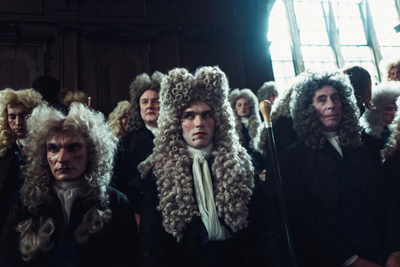 "The Queen and Sarah have a very complicated relationship that is constantly shifting. So it's impossible to sum up in a sentence," notes Weisz. "The Queen needs Sarah and Sarah I think loves to be needed by the Queen. Neither politics, nor battle tactics nor running the country is Anne's strong suit, but that's all very appealing to Sarah. Yet, they are also childhood best friends who make love to one another. To me, their relationship gets into all kind of themes of sexual politics, power games, power struggles, emotional needs, emotional dependence, dominance and subjugation, as well as pain, protectiveness and healing."
"The Queen and Sarah have a very complicated relationship that is constantly shifting. So it's impossible to sum up in a sentence," notes Weisz. "The Queen needs Sarah and Sarah I think loves to be needed by the Queen. Neither politics, nor battle tactics nor running the country is Anne's strong suit, but that's all very appealing to Sarah. Yet, they are also childhood best friends who make love to one another. To me, their relationship gets into all kind of themes of sexual politics, power games, power struggles, emotional needs, emotional dependence, dominance and subjugation, as well as pain, protectiveness and healing." Even amid all the men making power bids in the court of Queen Anne, Lady Sarah has few rivals. So it takes her by surprise when the woman she chose to become Anne's bedchamber maid"her subservient cousin, Abigail" becomes her greatest threat on every level.
"Sarah really misjudges Abigail, I mean completely," says Weisz. "She perceives Abigail as being needy and weak because she's fallen on such hard times, and because her father lost his own daughter gambling. I think Sarah initially feels tenderness and compassion towards Abigail. She wants to protect her and teach her how to be a strong woman. It turns out, Abigail needs no help whatsoever."
A more modern reference for the emotional gamesmanship between the two women also came to mind. "Abigail reminds me of Eve in All About Eve, the younger actress who comes and steals Bette Davis's thunder," she says, referring to the Joseph L. Mankiewicz's classic about a young Broadway star who unravels the career of her one-time idol.
Weisz emphasizes that these are her analyses of the character, not necessarily those of Lanthimos, who does not discuss motivation extensively with the actors. "Yorgos gives very elusive notes, elusive yet simple. There's always a sense of mystery," she concludes.
Emma Stone: Abigail Hill
"I didn't want to have a villain and a victim. Instead the idea of who is a villain or a victim is one that shifts and changes and moves from one character to another. This way you feel for what they each do and you aren't be able to make absolute judgements on their characters even if they do a horrible thing."
-Yorgos Lanthimos
From the moment Abigail tumbles from her carriage into the stinking mud outside the Royal Palace, she begins to skew the balance of power within. Throwing herself upon Sarah's mercy, she takes a job as a scullery maid but soon ingratiates her way deep into the Queen's bedroom. If Sarah has always dominated the fragile Queen, Abigail soothes her, and the student overtakes the master in the balance of power.
As with her cohorts in the film's triangle, Abigail is made of contrasts"her cool, shrewd pragmatism, the fruits of a hard knock life, mix with her seemingly unlimited capacity for charm. Evoking all of them is Academy Award winner Emma Stone in her first outing with Lanthimos, who watched her reveal new sides to her screen persona.
Says Lanthimos, "I've always appreciated Emma a lot and as soon as I met her I understood that she was very smart, that she like to dive into things and that she felt really strongly about this character. It was just amazing to see her work. I knew she could do this, but I don't think she has had the opportunity to ever do something like this before. So it was just a great experience to witness that."
It was the way Abigail uses and then breaks all the rules of social mobility that most intrigued Stone. "I love how Abigail unfolds. She has a great amount of confidence and she is a real survivor," Stone says. "She is always listening and paying attention and using what she learns."
Stone was also drawn to the trio of women her character joins. "That there are three really beautifully crafted females at the center of this story still remains rare in film scripts," she points out. "The way they are each so flawed, so hilarious and so very complicated, I love that. It's just reflective of real life."
For Stone, the reason why Abigail is able to win the wary Queen's trust is that Abigail senses her need to be loved for who she is, rather than for her enormous stature and power. "I think Anne's a pretty tragic character. I don't see her as pathetic because she clearly has a power in her that comes out when she's pushed up against a wall, but her life has been so tragic," says Stone. "She is permanently heartbroken and she's so physically debilitated that it breaks your heart--and I do think it breaks Abigail's heart a bit."
The role was also unexpectedly physical for Stone. "I had to learn to curtsy, to shoot an 18th Century gun and ride a horse," she says. Then there was the royal protocol. "In the Palace, everything is so formal and so presentational. That was all fascinating to learn. Abigail has to back out of the room because you don't turn your back on the Queen. Those things are so interesting."
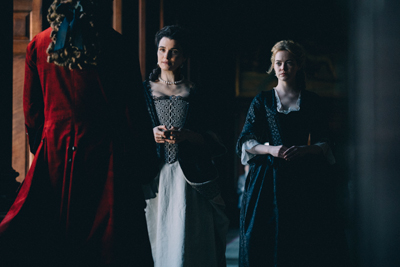 Through all the turns of her character, Stone found the collaboration with Lanthimos rewarding on a daily basis. She notes that he is not a brooding, unapproachable auteur. "Yorgos is an incredibly kind human being. He's not scary in any way, he just has very unique ideas and you just want to be able to submit to them without getting into your head too much. I felt in very safe hands with him."
Through all the turns of her character, Stone found the collaboration with Lanthimos rewarding on a daily basis. She notes that he is not a brooding, unapproachable auteur. "Yorgos is an incredibly kind human being. He's not scary in any way, he just has very unique ideas and you just want to be able to submit to them without getting into your head too much. I felt in very safe hands with him." That became apparent to everyone on set who watched Stone latch onto the role full bore, without restraint. "Emma simply inhabits Abigail," says Dempsey. "Abigail is the lightning rod who sets the story in motion. She transforms from a stranger to a very dangerous political and romantic operative. That is a high-wire challenge for any actor, and to do that all with a British accent adds a whole other dimension" Emma is exquisite in the role."
Stone joined with Colman and Weisz for a 3-week period before production, during which they developed both a rapport and the openness they would need before the cameras. Recalls Stone, "We got to know each other so well and trust each other in those three weeks. I think it created a certain dynamic between us and also with Yorgos himself where we were ready for whatever might happen, which was so important on a film like this."
Whigs Vs. Tories: The Supporting Cast
The rule of Queen Anne was marked not only by the first modern worldwide war and the uniting of the United Kingdom, but also by the emergence of partisan politics, or what was called at the time "the rage of party," rife with vicious, personal in-fighting and ideological stand-offs. The Queen sat atop a constitutional monarchy, sharing power with an elected parliament made of Whigs and Tories beholden to their constituents. The Whigs, made up largely of landed aristocracy, supported the war and initially had the monarchy's support. The Tories"the opposition party"sought to bring the war, with all its mounting costs in blood and treasure, to an end.
Although both parties were of course entirely made up of men. Lanthimos' vision emphasizes the women in action and in control; while the flamboyantly rouged and blinged-out men are reactive. "I wanted to place the women into a conglomerate of men who have no direction and really don't know how to handle serious matters. The men may be greater in numbers but not in spirit," Lanthimos describes.
The Tory opposition leader was Robert Harley, 1st Earl of Oxford and Earl Mortimer, considered one of the modern world's first master practitioners of "spin." Though he would ultimately become Queen Anne's chief minister, in the film Harley finds his access to the Queen constantly blocked by Sarah. It is only the arrival of Abigail that reverses Harley's fortunes, allowing him to make his case that the war is a financial disaster.
In The Favourite Nicholas Hoult plays Harley, known for his roles in Mad Max: Fury Road and X-Men: Apocalypse. From the start, Hoult relished the idea that his character, the kind more often in the historical foreground, in fact gets relegated to a secondary position in the film, reliant on Sarah and then Abigail to gain influence with Anne.
"I love that the film is about the power and the love of three women"Rachel, Emma and Olivia's characters. Whose characters are actually much stronger than the male characters in many ways and certainly, in terms of appearance compared to these men running around in three inch heels, leggings and big wigs," muses Hoult.
Hoult notes that Lanthimos did not encourage extended research into the historical figures. "We all understood that we were taking our characters outside the confines of what is known about them," he says.
Instead, going off his actions in the script, Hoult describes Harley as "quite manipulative," noting that "to get the Queen's ear, Harley has to weave his way in through an alliance with Abigail."
One historical reality that is reflected, albeit stylized, in the film is Harley's fondness for a flashy outfit. The extent of Harley's grandiosity took Hoult by surprise. He recalls, "Our makeup designer came to me early on and asked, 'has anyone spoken to you yet about your look for this film?' then she showed me photos. I had no idea! But I found it to be such a brilliant part of the character."
The ostentatious costumes did, however, challenge his castmates at times. Says Rachel Weisz, "Nick Hoult in his full makeup and wig and high heels looked like the most ravishing super model. My character really doesn't like Harley, and she's icy towards him, but if I looked at Nick, I would just melt. He looks incredibly funny and also very beautiful."
Harley's political rival is the most powerful politician of the day, Sidney Godolphin, 1st Earl of Godolphin, who served as First Lord of the Treasury under Queen Anne. Though a Tory by name, Godolphin aligned himself with the Whig leader John Churchill, The Duke of Marlborough, to find ways to fund England's war with France. Taking the role in The Favourite is the English actor James Smith, perhaps best known for the contemporary political satire In The Loop.
At first, Smith dove into meticulous research, even visiting his Godolphin's childhood home in Cornwall. But he soon realized the investigation was not going where Lanthimos wanted to go. "On day one of rehearsals, I left all my research behind, because that's not how Yorgos works," he explains. Instead, Smith zeroed in on the themes of the script. "I felt the story to be a very human journey of a friendship which falls apart rather badly. Samuel Johnson once said 'A man does well to keep his friendships in good repair.' Keeping friendships in good repair is not necessarily easy and Anne and Sarah are tested, to the very nth degree of that idea," he says.
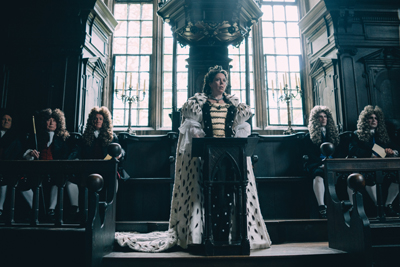 Unusual as Lanthimos' approach was to Smith, he says working with him was a kind of dream. "One of the qualities that I like about Yorgos is his benignity," he explains. "From day one, there was just a sense that all egos had been parked at the door. Yorgos is so calm and patient that he doesn't allow you to trade on your insecurities. Everyone is in the same boat, not just the actors but the wig department, sound, camera" everyone is treated as a total professional who knows their job, yet Yorgos wants to get something more out of you, something you didn't know you had. That is fascinating."
Unusual as Lanthimos' approach was to Smith, he says working with him was a kind of dream. "One of the qualities that I like about Yorgos is his benignity," he explains. "From day one, there was just a sense that all egos had been parked at the door. Yorgos is so calm and patient that he doesn't allow you to trade on your insecurities. Everyone is in the same boat, not just the actors but the wig department, sound, camera" everyone is treated as a total professional who knows their job, yet Yorgos wants to get something more out of you, something you didn't know you had. That is fascinating." Godolphin's political ally, and Sarah's husband, is John Churchill, the Duke of Marlborough, a soldier and statesman whose influence spanned five monarchs, and who commanded English, Dutch and German forces in the war against France. Taking the role is Mark Gatiss, the British actor, comedian, screenwriter and novelist, renown for indelible roles on "Doctor Who," "Sherlock" and as Tycho Nestoris in HBO's "Game of Thrones."
Like Smith, Gatiss was drawn to Lanthimos' unorthodoxy. "In some ways, you had to unlearn things you've been doing for years," he describes of the set. "Yorgos always wanted to dig deeper and find something unusual and more contemporary in these characters than anyone else might have seen." The historic Churchill married Sarah when she was still a teen, but later his wife's curiously tight bond with the Queen would prove to be of great advantage. Under her reign, Churchill amassed not only power, with Anne naming him to his dukedom, but a considerable fortune. The marriage especially fascinated Gatiss. "In the film, they are truly a power couple," he observes. "Sarah is effectively running the country, and brilliantly playing the game of dangling political favors, while John is conducting the war. John acknowledges that his wife is better than he is at politics and she's the more important one in this relationship."
Having worked with Weisz before, Gatiss says he knew she would "grab this role with both hands." He continues: "It just suits her down to the ground"this very funny, witty woman who is nevertheless absolutely ruthless. She also shows how difficult it must have been to be Sarah, the steeliness it required and the enormous skill of avoiding all these bear traps set for her."
Rounding out the male supporting cast is rising star Joe Alwyn as Samuel Masham, who is only too happy to allow Harley to broker his marriage to Abigail, finally affording Harley the access he's long pursued. For Abigail, the marriage is equally valuable, raising her rank, bringing her closer to her quest to fully unseat Lady Sarah as the Queen's favourite.
But Masham is led by unabashed desire. "There's an immediate physical lust and interest for Masham, and being obviously higher up rank, he expects he'll be the one in power in their courtship. But Abigail quickly subverts that idea," says Alwyn. "Her wit and her boldness catch him off guard. He's turned on by the playful banter and each scene is a power struggle to see who comes out on top. Everyone in this film is using one another, whether it's for power, position, influence or sex."
Though a relative newcomer to film sets, Alwyn was keenly aware that Lanthimos' approach was atypical. "As long as you come willing and open to play around and jump into his mad mind, that's all that you need to do," he summarises.
To fill in smaller roles, casting director Dixie Chassay and her team took to the streets. "Yorgos likes to marry classically trained actors with people who have no experience. He finds the purity of their spontaneity very rewarding; it's something no one can recapture," Chassay explains.
Two of the film's principals"Mrs. Meg, played by Jennifer White and Sally, played by Lilly-Rose Stevens, as well as around 10 additional non-speaking ensemble roles"were cast from the street. "For each role we were looking for a great face that tells a story and exudes energy," Chassay says. "Each and every individual was chosen because they had a big story across their face."
Color, Camera, Design
"To be trapped in such close quarters only heightens the personal tensions."
- Ceci Dempsey, Producer
The kingdom and it denizens are part of a world in which the stark use of color, facial expressions, camera angles and visual contrasts are just as significant as the dialogue.
From the start, while honing the script with Tony McNamara, Lanthimos knew he wanted to use the Palace architecture as one uses the rooms in a bedroom farce, with a manic array of interconnections. "The way the Palace operated was really important to Yorgos visually and we used that in the storytelling," McNamara explains. "Yorgos liked the idea that everyone's rooms were connected and he liked the sense of Abigail starting downstairs and working her way up."
To portray the Palace, the production utilized Hatfield House, a Jacobean estate in Hertfordshire, England, on a parcel of land that has housed royals since the 15th Century. The present structure was built in 1611 by Robert Cecil, the Chief Minister to King James I, replete with grand staircases, capacious drawing rooms and crucially, elongated corridors that stretch for miles.
What mattered most to Lanthimos was that he had at his disposal the kind of oversized, echoing space where a person might feel insignificant, even lost. "From the beginning, I had this image of these lonely characters in these huge spaces," the director shares.
Within those huge rooms, Lanthimos worked closely with director of photography Robbie Ryan, whose recent works include American Honey, Philomena and The Meyerowitz Stories. Shooting with the rich warmth of 35mm film, Ryan's camera is both intimate and dynamic, hovering over and among the characters, constantly exposing them from striking angles and unexpected perspectives. Going in, the director also knew exactly the style of lighting he wanted: basically none. "There were a couple of instances outside at night where we had to use lights so you could at least see something, but the rest we shot like all my films"with natural light," says Lanthimos. "What you see is what was there on the day and I like to welcome that as part of the film; when there are sunny days the scene is sunny, when there are gloomy days it's darker. We did use candlelight for all the night scenes. I also like it because it allows you the time to concentrate on the essence of the film"on the performances and the camera movement, which I find the most important part."
The cast was intrigued by just how intensely focused Ryan and Lanthimos were on placing the camera in unusual spots. Says Nicholas Hoult, "Robbie Ryan is a phenomenal DP, and Yorgos was always looking for different angles. The film was never shot in a conventional manner and you saw them constantly seeking out different ways to film. I think that's part of what makes Yorgos' films feel different, fresh and at times unsettling. People already know the shorthand of most films so I think audiences shut off very quickly when they know what's coming. With Yorgos, you don't."
The epic task of crafting the Royal Palace to match Lanthimos' mind's-eye vision fell to production designer Fiona Crombie (Macbeth). She was assured early on that design anachronisms were A-OK, indeed welcome if they supported the universe of the storytelling. "From the outset, I knew the design was to be its own thing and not at all concerned with what did or didn't exist. We wound up with a mix. Some things truly sit within the period and others step out of it," she explains.
"I feel that when you enter into the space of Anne just by virtue of her 17 rabbits, you're already dropped into a language and a world that is its own kind of gem," Crombie says. "So while we were mindful of furniture styles of the era, we were far more focused on looking for the shapes, structures and aesthetics that fit the characters."
One overriding concept was that the Palace is a bit of a playground for those allowed in. "You have scenes such as the game with the guy being pelted with blood oranges and the duck races and there's just a lot of excess and a feeling of we're doing this because we can," observes Crombie.
Another concept, mirroring the photography, Crombie kept in mind was fluidity. "The Queen's apartment often changes and we had no fixed rules such as this is where that chair goes. I really like this idea that's in the script that the Queen is carried on a sedan chair, so there's a natural mobility of objects wherever she goes. I didn't worry too much about explaining. For example, suddenly in the Great Hall there's a duck race with 30 benches. We don't need to know where 30 benches come from. Then next time we're there it's a ball and then all of a sudden it's Abigail's dinner and it flips again. There's that possibility of things changing from moment to moment."
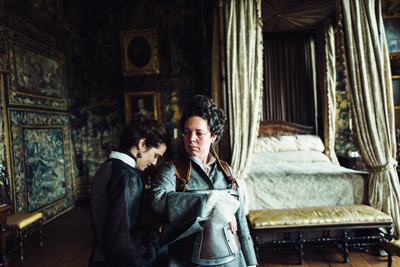 The chequered black-and-white marble floor in Hatfield's Great Hall helped Crombie to develop the design palette for the film with a monochromatic field of golds, champagnes, pineapple and oak tones, an idea that came from costume designer Sandy Powell. "We were all delighted by the way that the costumes sit in this gold and wooden warm world," says Crombie.
The chequered black-and-white marble floor in Hatfield's Great Hall helped Crombie to develop the design palette for the film with a monochromatic field of golds, champagnes, pineapple and oak tones, an idea that came from costume designer Sandy Powell. "We were all delighted by the way that the costumes sit in this gold and wooden warm world," says Crombie. Though the floors and walls were an inspiration, Crombie ended up altering Hatfield as it had never been before. "To create Queen Anne's room, we stripped out lots of incredible paintings, furniture and drapes so we could just put our own language into it."
She continues: "Of course, we were incredibly respectful. Everything in there is so precious and so beautifully created. One of the biggest challenges we had was all the candles because as you can imagine, there are very strict protocols about managing candles. So we had to use an enormous number of wax catchers. But the people who manage Hatfield were very supportive and we negotiated and negotiated and we wound up being able to do the vast majority of what we wanted to do."
Another challenge was crafting the "day spa" where Queen Anne lounges. "We built a massive mud bath for the Queen but just getting that huge tub into the building was an event," Crombie recalls. Throughout Crombie worked in synch with Ryan. "Part of the design was about supporting the movement of the camera, making sure Robbie had space to roam and push where he wanted. We felt that negative space was as important as the objects, so we aimed not to stack the rooms with things." The film's use of wide angle lenses and 360-degree whip pans was especially rewarding for Crombie, as it gives a new perspective on her team's work. "A character will walk into a room and you get this incredible wide shot"we're talking seeing from the floors to the ceilings to the corners," she says. "You see everything. It's been really satisfying."
Powdered Men, Empowered Women: Costumes, Hair And Makeup
The Favourite's costumes are inextricable from the overall design, merging with the sets and photography to add up to their own kind of world-building effect. Lanthimos collaborated with the legendary Sandy Powell, a three-time Oscar winner (for The Young Victoria, The Aviator and Shakespeare In Love) and eleven-time nominee for Best Costumes.
Powell herself actually reached out to Ceci Dempsey after being told of the upcoming production by a friend. "I knew it was going to be period yet slightly off the wall and there was an element of stylization involved"all the things I love," Powell says. Lanthimos also intrigued her. "I knew Yorgos' work and when I thought of what Yorgos' take would be on a period film, I knew it would be completely different from anything I'd done," she explains.
Perhaps the biggest draw for Powell was the rarity of having a trio of female leads, each as infinitely complicated as the next, to create around. "It happens so rarely," she points out. "It hardly ever happens you get two female leads, let alone three."
Lanthimos handed her broad creative freedom. "Yorgos is a man of few words," Powell describes. "He doesn't give you a great deal in terms of description or how exactly he wants things. But he did give me a few broader guidelines and he provided visual references that were inspirations. "
Powell notes that the period itself, the turn of the 18th Century, is quite an obscure one in cinema, rarely ventured into and certainly not in millennial times, which also opened things up. "It gave me the opportunity to think of the costumes from scratch, since I couldn't rent costumes from costume houses. Everything had to be made. On the one hand, that was completely daunting because we had very little time. On the other, it was exciting because it meant we were able to invent an entire world and push things in terms of color and style in our own way."
Color became key to the design. While Powell stayed true to 18th Century silhouettes, color became her sandbox, and she played with a minimalist palette of visually stark neutrals and golds. "There's something exhilarating about limiting the color palette. As much as I love color, this is the first time I've practically eliminated it from a film. In the palace scenes, we restricted the colors to blackand-white mostly, with some silvers and greys. The politicians, as is indicated in the script, are defined by their colors. The Tories are in red and the Whigs are in blue. But I dressed all of them in black and they just wear waistcoats in either the blue or the red."
Several period portraits of Queen Anne were available, but Powell put those images largely aside. "The closest costume I copied from my research are the Queen's robes of state that she wears while addressing Parliament. The shape and silhouette you see in the film is based off those courtly portraits," she elaborates, "but the details are still utterly made up and stylised."
When the Queen isn't addressing the government, she throws off her robes. "She's miserable, she's depressed, she's sick and getting worse. So consequently I've put her in a nightgown for the most of the film. It's what you do when you're ill and depressed; you don't get dressed and she's the Queen so she doesn't have to do anything she doesn't want to," Powell says.
Abigail has the film's most evolving wardrobe. Arriving at the palace in a faded, mud-plastered dress, she trades in her past for a kitchen servant's uniform. Then, says Powell, "in her mission to be upwardly mobile, she graduates to the Queen's maid so she gets another change of clothes and once she marries Masham, she really comes into money and her clothes get even finer. I really wanted to show her decorated and adorned at that point."
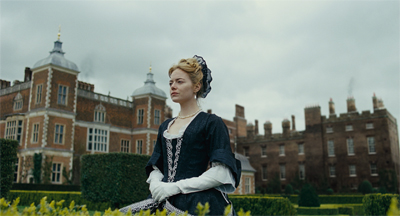 Her palette also shifts. "She moves from grey to black then to black-and-white and finally to all white. There's the idea that only rich people wear white, as they're the only ones who can afford to keep it clean. If you see someone dressed completely in white, they're most often wealthy," Powell observes. Meanwhile, it is the male characters who indulge themselves in finery and regalia, especially Nicholas Hoult's Harley. "Harley's the peacock, an utterly over- the-top, flamboyant dandy," comments Powell. "His dress is similar to all the men, but then I pushed the ruffles, frills and gave him lots of extra lace. Everything is a little bit bigger and more exaggerated. And since Nick is six-foot-two, with his three inch heels, he towers above everybody else, which only adds to the look."
Her palette also shifts. "She moves from grey to black then to black-and-white and finally to all white. There's the idea that only rich people wear white, as they're the only ones who can afford to keep it clean. If you see someone dressed completely in white, they're most often wealthy," Powell observes. Meanwhile, it is the male characters who indulge themselves in finery and regalia, especially Nicholas Hoult's Harley. "Harley's the peacock, an utterly over- the-top, flamboyant dandy," comments Powell. "His dress is similar to all the men, but then I pushed the ruffles, frills and gave him lots of extra lace. Everything is a little bit bigger and more exaggerated. And since Nick is six-foot-two, with his three inch heels, he towers above everybody else, which only adds to the look." Hair and Makeup Designer Nadia Stacey (The Sense Of An Ending) likewise found herself stepping into unexplored territory. "There's not a massive pool of research on this period to begin with as it doesn't often get done. And then Yorgos continually told us to forget the research, since he didn't care if a hairstyle was three years out of date," Stacey explains. "He wanted to play in such a way that you recognise this as being Queen Anne's court, but it's our own stylised version."
Stacey quickly discovered that Lanthimos prefers the natural messiness of life. "He doesn't like perfect hair with not a curl out of place; he would regularly take his finger and poke into my hairstyles. My team had to learn that if the actors were sweating, or backlighting made the hair go frizzy, not to rush in to fix it. When the wigs during the duck race were starting to move and all the hair was getting fuzzy, Yorgos said 'this is good, I like this.'"
Like Powell, Stacey used historically accurate silhouettes as a base, then played with palette, texture and details. To distinguish Tories from Whigs, she gave the conservative Whig men traditional bouffant wigs in natural hair colors, while the opposing Tories are in stark white wigs festooned with lovelocks--locks of hair tied onto the wigs in ribbons"and with faces in full powdered makeup. In the 18th Century it was common for men, especially men of the upper crust, to work at exquisitely pale faces ornamented with ruby red lips and flushed cheeks. Stacy especially had fun with the heavily madeup Harley. "Nick didn't realize he was going to be in such a huge wig and extensive make-up, but he totally threw himself into it. The thing about Nick is that he looks so beautiful in makeup. He's this ridiculous character but he's striking," muses Stacey.
Stacy gave Harley a panoply of mouches, the popular beauty marks of the day. "Mouches came into fashion because the toxic, lead-based powder applied to faces left pockmarks, which led people to covering up their scars with patches that become more and more elaborate"– heart-shaped, moon-shaped, starshaped," she explains. "Mouches also were a secret language, a way of flirting in court. So one above your eye meant you're looking for a new friend; on the chin meant a kiss and nothing further; on your cheek, you were feeling bold. So we really played with that with Harley."
In pointed contrast to the men, the three main leads' faces are often nearly bare. "Our leading trio wear pretty much no makeup," Stacey explains, "and we were often asked to strip their minimal makeup back even more." The hairstyles of the day were also less extravagant for the women than the men. "It's probably the only period in history where the men were so much more adorned than the women," Stacey notes, "and we emphasised that."
Stacey's challenge in the women's hair was reflecting Abigail's rise and Sarah's concomitant fall. "Abigail wants to become Sarah, so she end ups with hair that Sarah would wear, as if to say, 'I've become you now.' Once she marries Masham, she comes into what we called her 'Lady' hair, with the classic shape of the time. It's a real 'I've arrived' moment for Abigail. And she flips places with Sarah who, after her accident, begins to break down. Sarah becomes a broken figure in terms of her looks." All of the department heads came to relish the atmosphere on set. Says Ed Guiney, "With Yorgos, it is best to try to create an environment where he can work closely with the actors and key crew with a minimum of interference and a minimum of fuss. He likes a quiet, focused, low key work environment, and everyone thrived in that."
Still, even with the creatively electric atmosphere on set, no one quite knew what to expect. Because of the way Lanthimos plays so freely during the shoot, the final result is even more unpredictable than on most film sets. When photography wrapped, the storytelling work only intensified as Lanthimos collaborated with editor Yorgos Mavropsaridis (The Killing Of A Sacred Deer) to sculpt the final cut. The pair has worked together since the very beginning of Lanthimos' career and has forged their own distinctive back-and-forth methodology of discovering the structure. "Through our many years of collaboration we have developed a very precise method of work," says Mavropsaridis. "During our common working experience, I have witnessed the formation of Yorgos' cinematic language and have grown to know it well. There is a language particular to each film"from KINETTA to The Favourite"but also one that is common to all of his work. Though The Favourite is a bigger-budget film, with certain already standardized procedures to be considered during post-production, we still managed to work using our own method."
Much of that method is beyond words as both undertake the intensive search for the film's final form. "Our first collaboration started on the 'mute' mode, but has since progressed enormously, though we still both prefer not to have to discuss much," Mavropsaridis explains. "During the shooting period I start exploring the material, with the aim of presenting him with an interpretation, a possibility of the many options still to be explored both in terms of the story and of the way of telling of the story."
The beginning is never straightforward but both have faith in the process. "Yorgos' first reaction is inevitably one of despair, but following our method then usually saves us," muses Mavropsaridis. "After his first shock, we start reconstructing the narrative. We take notes and he leaves me to work on these notes, as well as to follow whatever might arise in my long-formed editing synapses."
He continues: "Yorgos supplies me with music and new ideas until we are ready to screen it for friends and family, another procedure that helps us to find our way through this universe of possibilities. After our first screening, we go back again, this deconstructing what we have built so far, experimenting with new ideas and exploring other aesthetic and narrative possibilities."
Having been trained on an Old School machine, the Moviola, Mavropsaridis now embraces Avid Media Composer, which he calls "Moviola-friendly."
Both Lanthimos and Mavropsaridis know by instinct when the film is approaching its final stages. "There is a very delicate balance between form and content in the 'Lanthimic' world," Mavropsaridis describes. "So the process is about finding the balance, tone and stylistic preferences that most accurately communicate his intentions and are most true to his world. Serving this language is the main aim of the edit. Along the way, we find ideas that are innovative, others that are aborted, but we are always thinking about connecting with our imaginary viewer."
That connection is key to Mavropsaridis, right up to the last frame of the film. "As an editor I'm deeply interested in how the viewer will experience at the end of this film and what it will communicate to her. I'm certain the interpretations will be very unexpected," he says.
As to whether he has any, well, favorite moments, Mavropsaridis offers: "All the small bits and pieces of the film have both their rewards and their difficulties… in a way they are all my favorites!" Dempsey was enamored of how the final film balanced all three leads. "It is an incredible feat that Yorgos juggles all three of them so that they are each incredibly vivid."
Guiney found himself thinking not so much of the Stuart Period (1603-1714) as of 2018. "Often we imagine that those who lead us are less-flawed versions of ourselves. Absolutely vulnerable to the same jealousies, corruption and insecurities. I think what you see in this film are three powerful women behaving really intensely to each other with great feeling and in many ways with great integrity of feeling, even if it moves them towards behavior that's not always good. And that feels to me like something that we could see in the world today."
"For me it was never important to accurately show a particular time period or a certain court or even a specific country. I was interested in the characters and the position that they occupied in that society.
A position of power of the selected few that could affect the lives of many other human beings. We were inspired by the real people and stories but largely reimagined them in order to make a film that hopefully alludes to similar issues that we all can identify with or recognise in our everyday contemporary lives," concludes Lanthimos.
The Favourite
Release Date: December 26th, 2018
MORE


